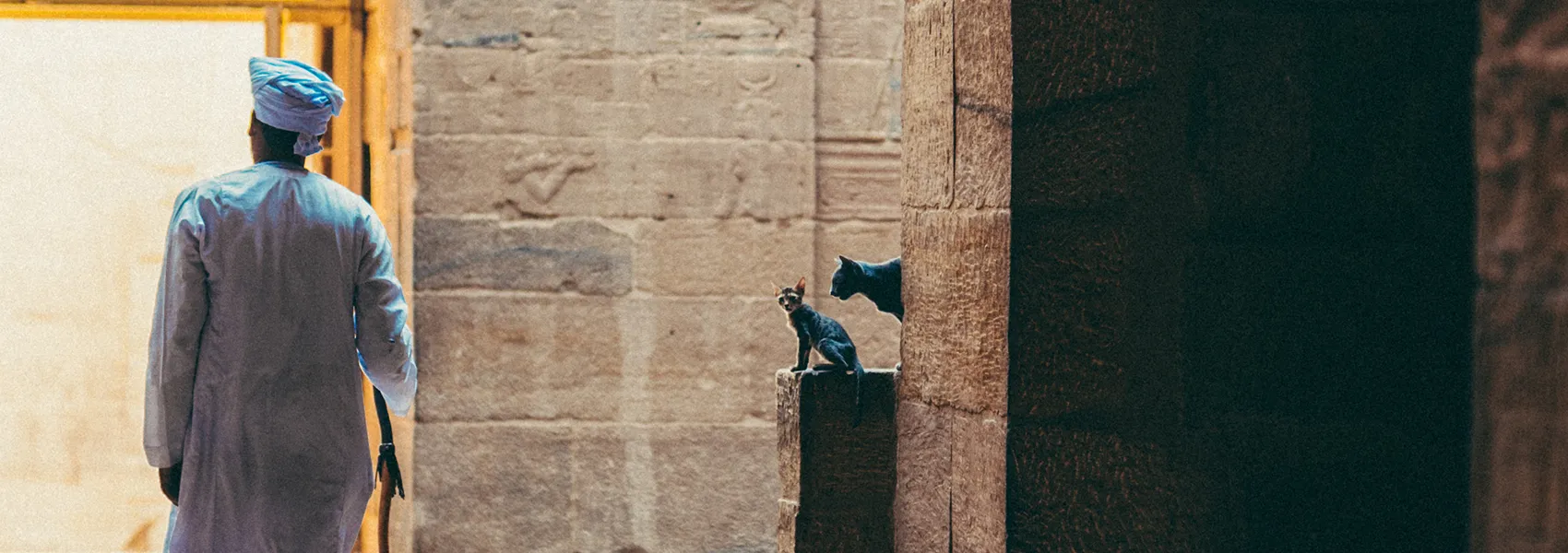
Published 27th Dec. 2024
Reading time
With imposing pyramids and crumbling cities, there’s an abundance of archaeological sites to explore on a trip to Egypt. From Cleopatra and animal-headed gods to pharaohs, sarcophagi and mummies, you don’t need to be an expert Egyptologist to enjoy a glimpse into the country’s past. A cruise down the Nile on a boat such as our very own Steam Ship Sudan takes you to some of the top sites, including Alexandria, Cairo and the Nile Valley. A journey through these riverside landscapes from Luxor to Aswan offers views that could rival the ancient sites. Ready to explore? Read on to discover our roundup of the top ten most beautiful archaeological sites in Egypt...
Kicking off our roundup of the most beautiful archaeological sites in Egypt are the Pyramids of Giza. Situated on the outskirts of Cairo, in northern Egypt, these colossal tombs were built over 4,500 years ago. Towering and tall, the Pyramid of Cheops (also known as the Great Pyramid) is the largest of the three and was constructed by Pharaoh Khufu – the first Egyptian king to build a pyramid in Giza. A portal to the past, the Great Pyramid is the only one of the Seven Wonders of the Ancient World that remains today.

Image by bycmdcrey / Pexels
Just steps away from the ancient pyramids stands the spectacular Sphinx. With the head of a pharaoh and the body of a lion, this limestone statue has been the guardian of the necropolis for nearly five thousand years. The statue spans an impressive 240ft and has come to symbolise the power of ancient Egypt’s monarchy. While in the area, be sure to also visit the stunning Khufu Ship. This well-preserved vessel was designed to transport pharaohs from the world of the living to that of the dead. It now sits in a sunlit room at the foot of one of the pyramids and serves as a remarkable example of Egypt’s naval architecture.

Image by Caravana/Getty Images
Next up on our list of the best archaeological sites in Egypt is the Necropolis of Saqqara. Just an hour south of Cairo, this vast complex is one of the largest ancient sites in the country. Saqqara’s history dates back to Egypt’s first dynasty, housing royal tombs from the reign of Tutankhamun to that of Ramses II. The necropolis features a range of pyramids, offering a glimpse into the architectural trial-and-error technique behind Egypt’s pursuit of the perfect pyramid. The Necropolis of Saqqara feels like an open-air museum filled with crumbling statues, faded hieroglyphs and historic tombs.

Image by boby
A former capital of the ancient world, Luxor’s countless wonders unfurl on the banks of the Nile – none more eye-catching than Luxor Temple. With its elegant columns lining the riverbank, the temple was built in the New Kingdom era and is one of the most impressive sanctuaries of Pharaonic Egypt. Today, the remains of the Great Colonnade Hall still stand, with sandstone fragments containing hieroglyphs scattered around the site.

Image by Anton Ivanov/siempreverde22/stock.adobe.com
5
Among the top archaeological sites in Egypt are the Temples of Karnak. Perched on the eastern bank of the Nile in Luxor, Karnak is the country’s largest temple complex. The site has an extensive collection of centuries-old monuments and ancient chapels, including the immense Hypostyle Hall. With its lofty columns and intricate carvings, these temples once served as a centre for religious rituals, with many pharaohs leaving their mark on the sandstone structures over thousands of years.

Image by Kirsten Dohmeier/Getty Images/iStockphoto
6
The Valley of the Kings is a must-visit destination during your next Egypt holiday. This world-famous archaeological site lies on the West Bank of the Nile, near the busy city of Luxor. The burial ground of the pharaohs of the 18th, 19th and 20th dynasties, the site is home to over 60 tombs – including those of Tutankhamun and Ramses III. Nearby, you’ll find the Valley of the Queens, containing the tombs of the royal wives and the Valley of the Nobles, where governors of Thebes were laid to rest.

Image by Olivier Romano
The Temple of Seti I awaits in Abydos (a two-hour drive from Luxor). One of Egypt’s most important archaeological sites, this limestone temple began construction under the direction of Seti I, the second pharaoh of the 19th dynasty. It was later completed by his son Rameses II. Dedicated to Seti I, the L-shaped structure also honours six major gods (Osiris, Isis, Horus, Amun-Ra, Ra-Horakhty and Ptah). As you stroll through the temple, you’ll pass the intricate battle scenes that adorn the halls and pylons – reminders of the site’s ancient history.

Image by Brandon Rosenblum / Getty Images
Located in Edfu, the Temple of Horus is one of Egypt’s best-preserved temples. Dedicated to the god Horus of Behedet (the protector of Edfu), this ancient site is a striking example of Ptolemaic temple architecture in Egypt. One of the structure’s most notable features is its 118ft high gateway, which leads to the expansive courtyard, bordered by 32 columns. Detailed reliefs can be found on the sandstone walls, showcasing scenes of royal rituals and mythical battles.

Image by Olivier Romano
Tucked away on Agilkia Island, near Aswan, the Temple of Philae is one of the most beautiful archaeological sites in Egypt. Surrounded by burgeoning bougainvillea, the temple appears like a mirage from the water and is characterised by its monumental façade. Dedicated to Isis (the Egyptian goddess of magic, maternity and healing), the temple is thought to be the site where the last hieroglyph was inscribed, just before the spread of Christianity. In the past, the rising Nile waters would submerge parts of the temple, and as a result, the entire structure was relocated from Philae Island to the higher ground of Agilkia Island in the 20th century to prevent flooding.

Image by Amr Maher / Getty Images
In the heart of Nubia stands the looming Temples of Abu Simbel. Devoted to the glory of the great pharaoh Ramses II, these awe-inspiring structures were carved into two colossal sandstone hills overlooking the Nile. The site includes the Great Temple of Ramses II and the Temple of Hathor, both guarded by monumental statues. Rediscovered in 1813 by the Swiss explorer Jean-Louis Burckhardt, the temples had been lost to the sands over time, but now they stand as an iconic testament to ancient Egypt’s past majesty.

Image by Mathias Depardon
Written by Amy Larsen | Header image by boby
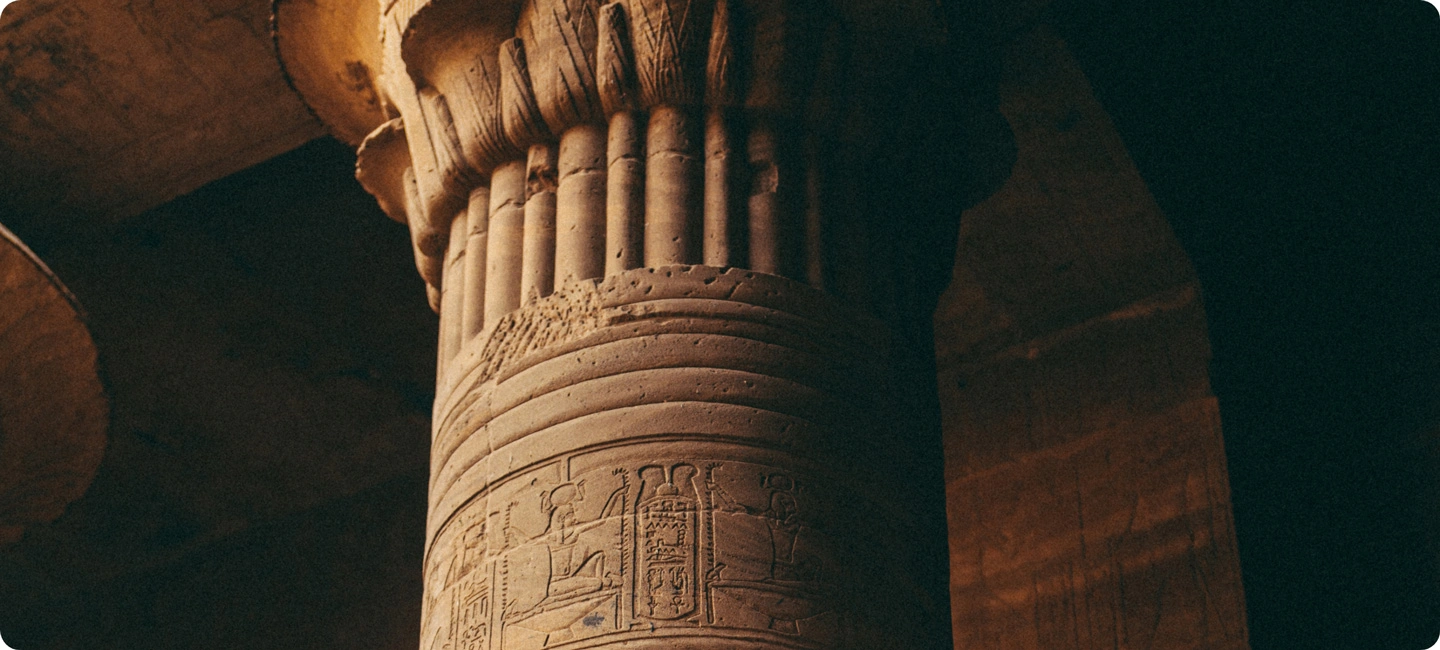
When it comes to Egypt’s Nile, we’ve secured full bragging rights with exclusive access to the Steam Ship Sudan, the last of the authentic paddle steamers which also served as inspiration for Agatha Christie. If it’s the lesser-known sites you’re after, we can instead bag you a cabin onboard the Flâneuse du Nil, a traditional dahabieh sailing boat that plies the Nile. We’ve also got the best guides under our belt for exclusive access to the Pyramids, temples and tombs of Egypt, and our handy app is home to an ever-growing list of tried and tested shops, restaurants and more.
ENQUIRE NOWPractical advice and inspiration for your next trip
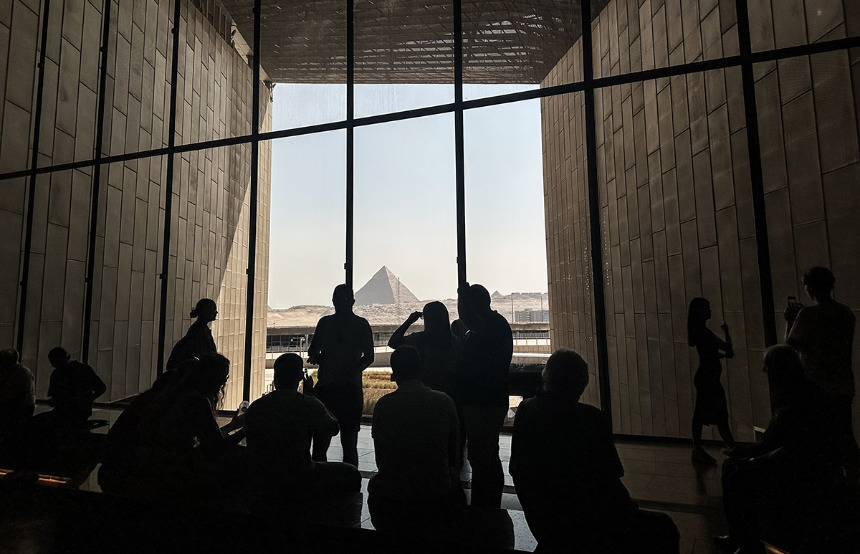
As Tom Holland (the esteemed historian, not Spiderman) so succinctly put it in the first edition of our magazine, Original Traveller, ‘Egypt is where tourism began’. And the next chapter in the history of tourism in Egypt is about to begin. We’re always looking for a reason to shout about this captivating country, and this November, we have the perfect excuse: the long-awaited opening of the Grand Egyptian Museum (GEM).
3rd November 2025 - Egypt Culture
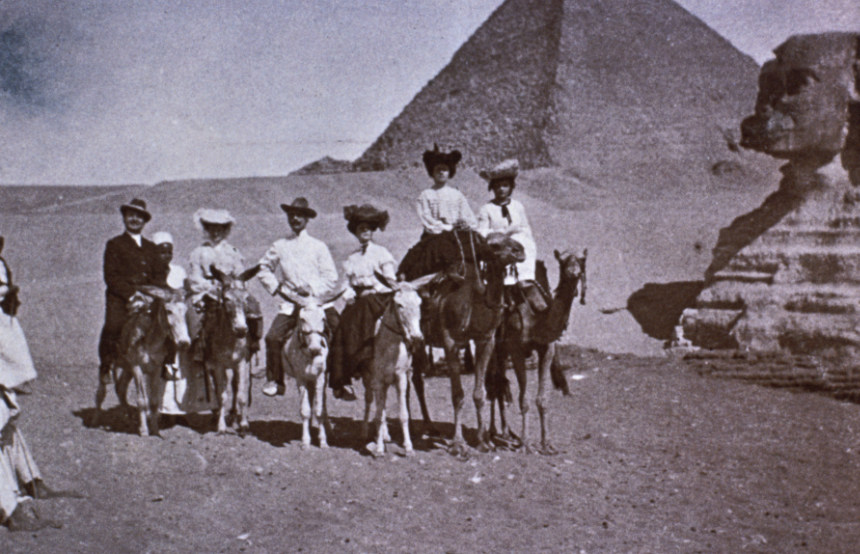
This article originally featured in the first edition of our magazine, Original Traveller. The world’s first tourist destination; Egypt has attracted the great and the good for more than four millennia. Tom Holland charts the ebb and flow of the country’s time travel. Egypt is where tourism began. Perhaps this is hardly surprising. By the 5th century BC, when the first tourist guide to Egypt was written, pharaonic civilisation was already more than two and a half millennia old.
29th October 2025 - Egypt Travel Inspiration
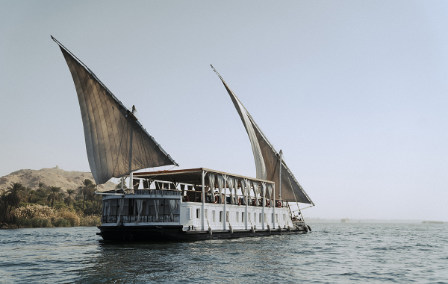
On a research trip to Egypt, our Content Manager, Ella, soaked up the storied sights lining the banks of the Nile onboard the Flaneuse du Nil. Elegant and intimate, this traditional dahabieh sailing boat journeyed from Aswan to Esna, leading her to archaeological hotspots and ancient temples. She explored the sandstone quarries of Gebel el-Silsila, admired ancient carvings in Kom Ombo and dined like a Pharaoh on the sailing boat’s sundeck.
7th May 2025 - Egypt Travel Tips

Our team of destination experts will get to know you and your unique requirements for your holiday

We work with you to build an ultra-personalised holiday itinerary with your choice of accommodation, experiences and activities

All of our holidays include little extras designed to make a big difference to your trip, from fast-tracking you through airport check-in and security to our network of local Concierges